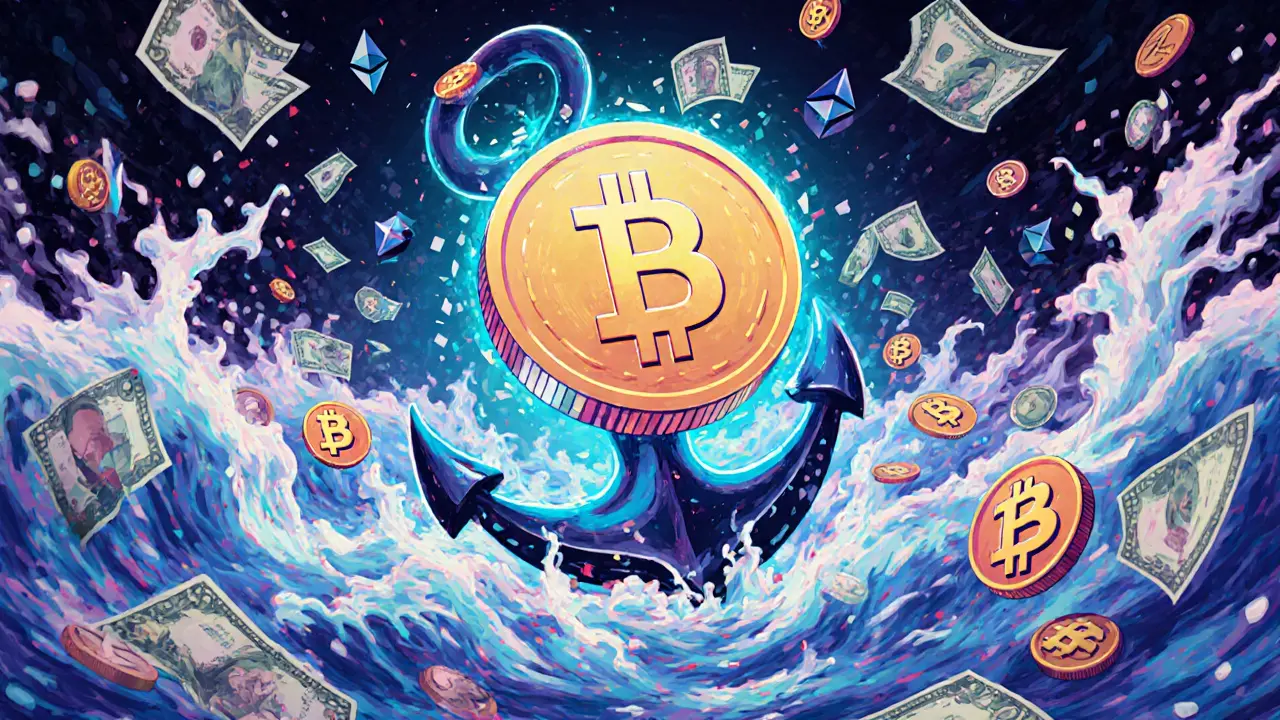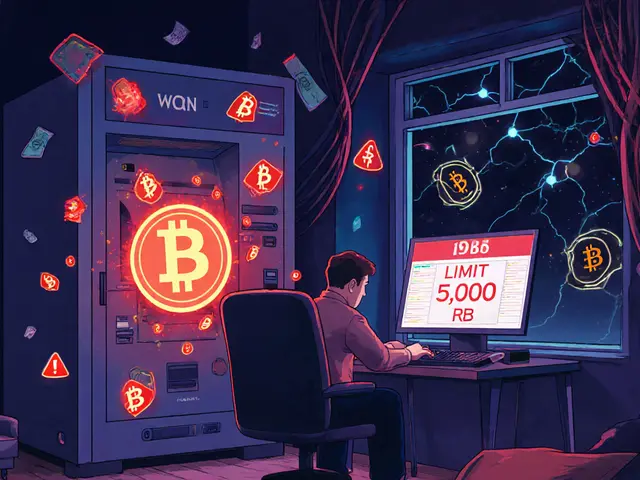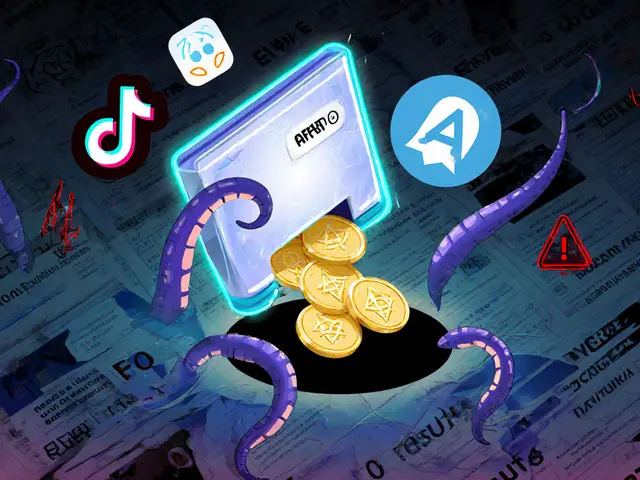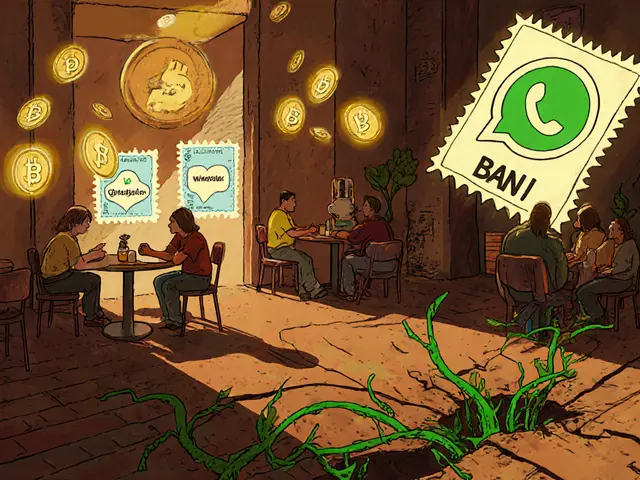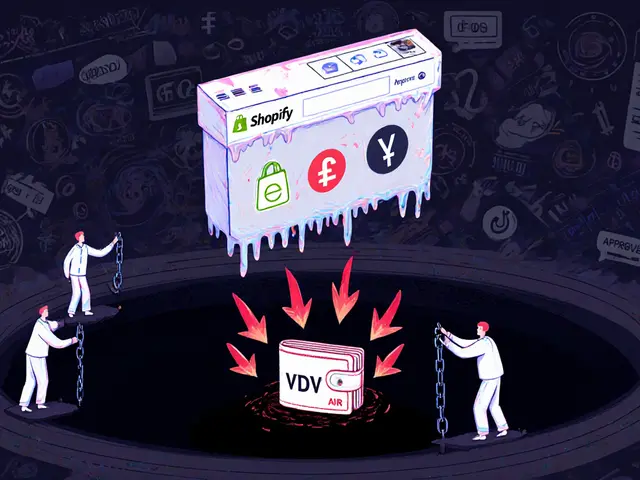Stablecoin Risk Calculator
Understand Stablecoin Stability
This tool helps you assess the risk level of different stablecoin types based on reserve backing and transparency. Enter your criteria below to see how they impact stability.
Stablecoin Risk Assessment
Key factors: Fiat-backed coins with high transparency are most stable. Algorithmic coins carry the highest risk.
Bitcoin and Ethereum can swing 20% in a single day. That’s fine if you’re gambling on the next big moonshot. But what if you just want to send money to a friend overseas, pay for goods online, or hold digital cash without watching your balance vanish overnight? That’s where stablecoins come in.
Stablecoins are cryptocurrencies that don’t act like cryptocurrencies. They’re designed to hold their value-usually $1.00-no matter what’s happening in the rest of the crypto market. They solve the biggest problem with digital money: extreme price swings. While Bitcoin might go from $60,000 to $45,000 in a week, a stablecoin like USDC stays at $1.00. That’s not magic. It’s engineering.
How Stablecoins Stay Stable
Not all stablecoins work the same way. There are three main types, each with different ways of keeping their value steady.
The most common type is fiat-backed. These are tied 1:1 to real money like the U.S. dollar. For every USDC or USDT in circulation, the issuer claims to hold a dollar in reserve. That reserve isn’t just sitting in a shoebox-it’s usually in cash or short-term U.S. Treasury bills. These bills are safe, liquid, and pay interest. That’s why, since 2022, stablecoin issuers have piled into Treasuries. In fact, stablecoins now hold over $400 billion in U.S. government debt. When people buy USDC, they’re not just getting a digital dollar-they’re indirectly funding the U.S. government’s borrowing.
Then there’s crypto-backed stablecoins, like DAI. These don’t use cash. Instead, they’re backed by other cryptocurrencies-usually Ethereum. But here’s the twist: you have to lock up way more crypto than the stablecoin you want. If you want $100 in DAI, you might need to deposit $150 worth of ETH. That extra 50% is called overcollateralization. It’s insurance against price drops. If ETH falls 30%, the system still has enough value to cover your DAI. Smart contracts automatically sell collateral if things get too risky. No human intervention needed.
The third type is commodity-backed. These are pegged to physical assets like gold. PAX Gold (PAXG) lets you own a fraction of a troy ounce of gold stored in secure vaults. Tether Gold (XAUT) does the same. These aren’t as popular as dollar-backed coins, but they appeal to people who trust gold more than banks or governments.
Then there’s the risky one: algorithmic stablecoins. These try to stay stable without any real assets backing them. They use code to print or burn coins based on demand. If the price drops below $1, the system burns coins to reduce supply and push the price back up. If it rises above $1, it prints more. Sounds smart-until it fails. TerraUSD (UST) collapsed in May 2022 because its algorithm couldn’t handle a run. When people started pulling out, the system couldn’t keep up. UST lost its peg and crashed to pennies. It took $40 billion in market value with it.
Why Stablecoins Are Becoming Essential
Stablecoins aren’t just a workaround for volatility. They’re becoming the backbone of digital finance.
Imagine sending money to your family in Nigeria. Traditional wire transfers take days and cost 10% in fees. With a stablecoin, you send it in under a minute for less than $0.10. The recipient cashes out locally via a mobile app. No bank needed. This is already happening across Africa, Latin America, and Southeast Asia.
Businesses use stablecoins to pay freelancers globally without worrying about currency conversion or exchange rate swings. E-commerce platforms accept USDC for payments and settle in dollars at the end of the day. Crypto exchanges use stablecoins as trading pairs because traders don’t want to hold volatile assets when they’re waiting for the next opportunity.
And because stablecoins are built on blockchains, they’re programmable. You can set up automatic payments, escrow services, or even interest-bearing wallets-all without a bank. A freelancer can get paid in USDC and have 5% of it automatically moved into a savings wallet every week. That’s not possible with cash or even traditional bank transfers.

The Hidden Risk: Runs and Reserves
Stablecoins look safe. But they’re only as strong as their backing-and public trust.
When TerraUSD collapsed, it wasn’t because the code broke. It was because people lost faith. Once a few started redeeming, others panicked and ran. In 24 hours, over $30 billion vanished. That’s the danger of 24/7 digital markets. There’s no closing bell. No bank holiday. No FDIC insurance.
Even the biggest stablecoins aren’t immune. In 2023, USDC briefly dropped to $0.87 after a regional bank failed and held some of its reserves. The peg snapped back within hours after Circle, the issuer, confirmed it had enough cash. But the scare showed how fragile confidence can be.
Transparency matters. Who’s auditing the reserves? Are they real? Are they liquid? Are they held in a bank that could fail? The best stablecoins-like USDC and USDT-publish monthly reports from major accounting firms. Others don’t. If you can’t find an audit, assume the worst.
Regulators are watching closely. The U.S. Treasury and Congress are pushing for rules that require stablecoin issuers to hold only cash and Treasuries, ban risky assets like corporate bonds, and ensure users can always redeem their coins for dollars. Countries like the EU and Singapore are doing the same. The ones that follow these rules will survive. The ones that don’t will disappear.
Who Uses Stablecoins-and Why
It’s not just crypto traders. Here’s who’s really using them:
- Remittance users in countries with weak currencies-like Argentina, Turkey, or Nigeria-use stablecoins to protect savings from inflation.
- DeFi investors use them as a safe parking spot when markets are down. They earn interest by lending them out on platforms like Aave or Compound.
- Businesses use them for payroll, vendor payments, and international sales to avoid currency risk.
- Developers build apps that pay users in USDC for completing tasks, watching ads, or contributing data.
- Investors use them to enter and exit crypto trades quickly without converting to fiat.
Even banks are getting involved. J.P. Morgan’s Onyx blockchain platform uses a stablecoin for institutional payments between clients. Goldman Sachs is testing similar systems. The traditional financial world isn’t rejecting stablecoins-it’s adopting them.

What to Look For in a Stablecoin
Not all stablecoins are created equal. Here’s what to check before using one:
- Backing-Is it backed by cash, Treasuries, or risky assets? Stick to cash and Treasuries.
- Transparency-Does it publish regular, independent audits? If not, avoid it.
- Issuer reputation-USDC (Circle) and USDT (Tether) have been around since 2014. Newer coins? Take caution.
- Redemption rights-Can you actually exchange it for dollars? Some coins restrict redemptions for large holders.
- Regulatory compliance-Is the issuer registered with financial authorities? USDC is regulated in the U.S. Many others aren’t.
For most people, USDC or USDT are the safest bets. DAI is good if you want to avoid banks entirely. Avoid algorithmic coins unless you fully understand the risks.
The Future of Stablecoins
Stablecoins won’t replace the dollar. But they’re becoming the digital version of it.
In five years, you might pay your rent in USDC. Your paycheck might arrive in DAI. Your savings account could be a wallet that earns 4% interest in stablecoins. Central banks are even experimenting with their own digital currencies-CBDCs-that could compete with or complement stablecoins.
The key is regulation. If governments force issuers to hold safe, liquid assets and disclose everything, stablecoins will become the most reliable part of crypto. If they’re left unchecked, another collapse is coming.
Right now, stablecoins are the only part of crypto that works like money. They’re fast, cheap, global, and stable. For anyone tired of watching their digital savings vanish overnight, they’re not just a solution-they’re the only real option.
Are stablecoins really safe?
They’re safer than Bitcoin or Ethereum, but not risk-free. The safest stablecoins-like USDC and USDT-are backed by cash and U.S. Treasury bills and undergo regular audits. But if trust collapses, users can run for the exits, causing a price drop. Always check the issuer’s transparency and reserve quality before using one.
Can I lose money with stablecoins?
Yes, but not because of price swings. You can lose money if the issuer fails, freezes redemptions, or holds risky assets. In 2023, USDC briefly fell to $0.87 after its reserve bank failed. While it recovered, it showed that stablecoins aren’t immune to systemic risk. Always use coins with strong, transparent backing.
What’s the difference between USDC and USDT?
Both are dollar-backed, but USDC is issued by Circle and is fully transparent with monthly audits. USDT is issued by Tether and has faced more scrutiny over its reserve composition. While USDT is larger and more widely accepted, USDC is considered more trustworthy by regulators and institutions.
Why do stablecoins hold U.S. Treasury bills?
Treasury bills are safe, liquid, and pay interest. Since 2022, yields on short-term Treasuries have risen, making them ideal for stablecoin issuers to earn returns on reserves. This also means stablecoin growth is now tied to U.S. monetary policy-more demand for stablecoins means more demand for Treasury bills, which affects interest rates.
Can stablecoins replace traditional banking?
Not yet, but they’re already replacing parts of it. Stablecoins enable faster, cheaper cross-border payments, automated payroll, and interest-bearing digital wallets-all without banks. Major financial firms like J.P. Morgan and Goldman Sachs are building their own stablecoin systems. The future likely involves hybrid systems where banks and stablecoins coexist, not compete.
